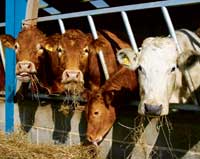New guidelines aid disease research

Research into the spread of animal diseases is set to become more effective with the use of new guidelines.
Scientists at the Universities of Edinburgh and Glasgow have produced a checklist for researchers which will also help policymakers interpret data used to inform animal and public health decisions.
The guidelines, known as The Guide to Good Practice for Quantitative Veterinary Epidemiology, include more than 200 recommendations to ensure best practice for areas including computer modelling, data interpretation and communicating with policymakers.
They could, for example, be used to guide analysis of the impact of badger culling on bovine TB or the control major outbreaks such as foot-and-mouth and help to inform policy decisions.
Mark Woolhouse, professor of Infectious Disease Epidemiology at the University of Edinburgh, said: “There are no set standards when, for example, it comes to the use of mathematical models of the spread of diseases, even though these can have major impacts on animal or public health. This set of guidelines aims to provide a benchmark to help gain that level of confidence.”
The guidelines aim to help policymakers and other interested parties become more familiar and confident with complex analyses of epidemiological data intended to predict the spread of disease or the effectiveness of control measures.
The guidelines are also relevant to science in other fields. This could include adopting similar principles for quantitative analysis in areas related to climate change, economic forecasting or risk assessments.
